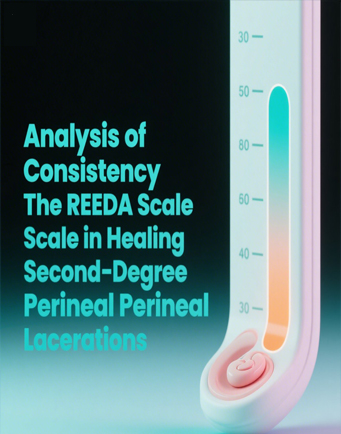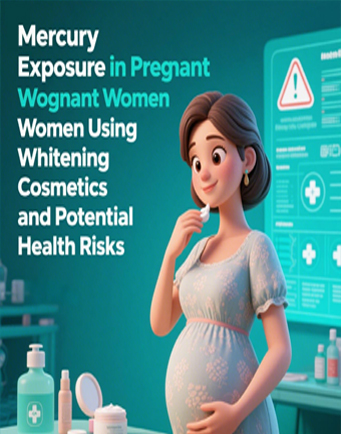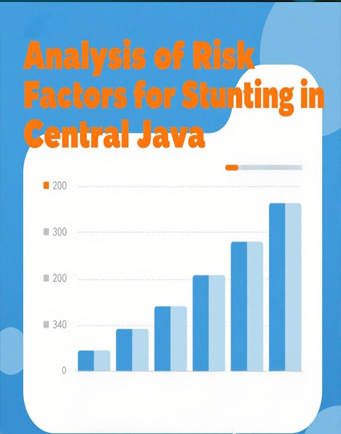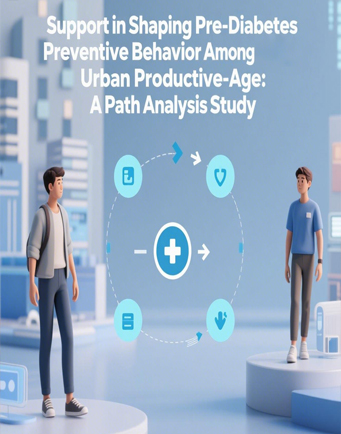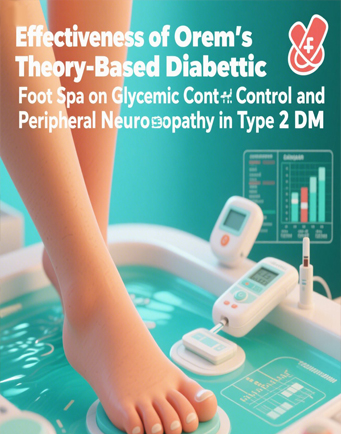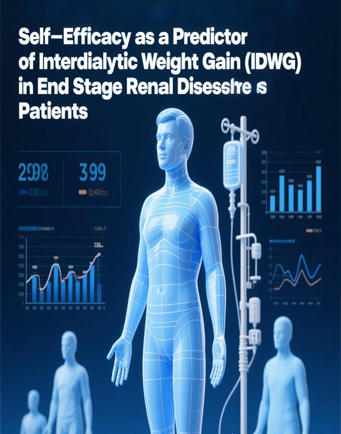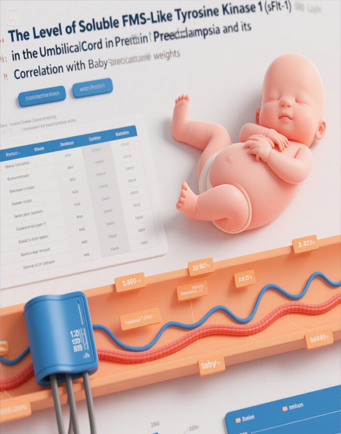The Impact of Caesarean Section and Place of Delivery on Utilization of Postpartum Care in Bangladesh
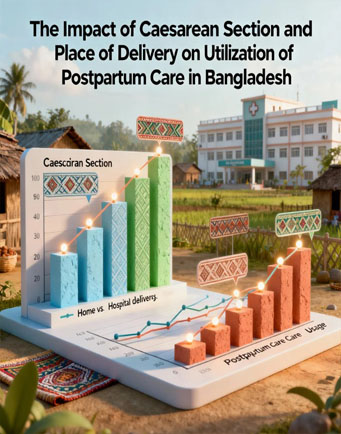
Downloads
Postpartum care is a critical component of maternal health, as it helps prevent complications and ensures the well-being of both mother and newborn. Despite global improvements in maternal healthcare, disparities in postpartum care utilization remain a significant public health concern, particularly in low- and middle-income countries such as Bangladesh. This study aimed to examine the impact of caesarean section and place of delivery on the utilization of postpartum care among women in Bangladesh. A cross-sectional study was conducted using nationally representative survey data, analyzing women who had delivered at health facilities. Univariate analysis described the distribution of sociodemographic characteristics and delivery-related factors, while bivariate analysis employed Chi-square tests to examine associations between independent variables and postpartum care utilization. Multivariate analysis using binary logistic regression assessed the adjusted impact of caesarean section, place of delivery, prenatal care, and household wealth on postpartum care uptake. The results revealed that women who delivered by non-caesarean section were 55% less likely to utilize postpartum care compared to those delivered via caesarean section. Women who delivered at private health facilities were 1.22 times more likely to utilize postpartum care than those at public facilities. Not receiving prenatal care decreased the probability of postpartum care by 55%, while women from the fourth wealth quintile and richest households were 1.58 and 2.60 times more likely, respectively, to access postpartum services compared to the poorest households. These findings underscore the importance of promoting equitable access to postpartum care, particularly for women delivering vaginally, at public facilities, or from lower-income households. Targeted policies that train providers in standardized postpartum care, strengthen follow-up through digital reminders and community health workers, and expand access in underserved areas can reduce disparities and improve maternal health outcomes in Bangladesh.
Abbani, A. Y., Sawangdee, Y., Omisakin, O. A., & Maretalinia, M. (2023). Socio-Demographic Determinants of Non-Utilisation of Antenatal Care Services by Women in the Northern Region of Nigeria. Journal of Health Research, 37(4), 261–269. https://doi.org/10.56808/2586-940X.1043
Alam, A. T. M. S., Alam, S., Mobasshira, K., Anik, S. M. N., Hasan, M. N., Chowdhury, M. A. B., & Uddin, M. J. (2025). Exploring urban-rural inequalities of maternal healthcare utilization in Bangladesh. Heliyon, 11(2), e41945. https://doi.org/10.1016/j.heliyon.2025.e41945
Anis, W., Amalia, R. B., & Dewi, E. R. (2022). Do mothers who meet the minimum standard of antenatal visits have better knowledge? A study from Indonesia. Journal of Education and Health Promotion, 11(1), 134. https://doi.org/10.4103/jehp.jehp_671_21
Ansong, E. (2015). The Association Between Household Consumer Durable Assets and Maternal Health-Seeking Behavior in Ghana. Women & Health, 55(5), 485–504. https://doi.org/10.1080/03630242.2015.1022815
Arntzen, E., Jøsendal, R., Sandsæter, H. L., & Horn, J. (2023). Postpartum follow-up of women with preeclampsia: facilitators and barriers — A qualitative study. BMC Pregnancy and Childbirth, 23(1), 833. https://doi.org/10.1186/s12884-023-06146-8
Bintabara, D., & Mwampagatwa, I. (2023). Socioeconomic inequalities in maternal healthcare utilization: An analysis of the interaction between wealth status and education, a population-based surveys in Tanzania. PLOS Global Public Health, 3(6), e0002006. https://doi.org/10.1371/journal.pgph.0002006
Biswas, R. K., Rahman, N., Islam, H., Senserrick, T., & Bhowmik, J. (2021). Exposure of mobile phones and mass media in maternal health services use in developing nations: evidence from Urban Health Survey 2013 of Bangladesh. Contemporary South Asia, 29(3), 460–473. https://doi.org/10.1080/09584935.2020.1770698
Childs, C., Sandy-Hodgetts, K., Broad, C., Cooper, R., Manresa, M., & Verdú-Soriano, J. (2020). Risk, Prevention and Management of Complications After Vaginal and Caesarean Section Birth. Journal of Wound Care, 29(Sup11a), S1–S48. https://doi.org/10.12968/jowc.2020.29.Sup11a.S1
D’haenens, F., Van Rompaey, B., Swinnen, E., Dilles, T., & Beeckman, K. (2020). The effects of continuity of care on the health of mother and child in the postnatal period: a systematic review. European Journal of Public Health, 30(4), 749–760. https://doi.org/10.1093/eurpub/ckz082
Gomora Tesfaye, D., Geta, G., Kene, C., Seyoum, K., Tekalegn, Y., Desta, F., ... & Negash, W. (2022). Maternal health care seeking behavior for neonatal danger signs and associated factors among Post-Partum mothers in Southeast Ethiopia: A Cross-Sectional study. INQUIRY: The Journal of Health Care Organization, Provision, and Financing, 59, 00469580221143629. https://doi.org/10.1177/00469580221143629
Hirani, F., Ariff, S., Nathwani, A. A., Peerwani, G., Kalbarczyk, A., Sultana, S., Kazi, A. M., Yousuf, F., Lefevre, A. E., Bhutta, S., Winch, P. J., Soofi, S., Bhutta, Z. A., Zaidi, A. K. M., Mir, F., Baqui, A. H., Hotwani, A., Zaidi, A. K., Kabir, F., … Bartlett, L. (2025). Patterns of care-seeking for postpartum symptoms in urban Karachi, Pakistan: implications for intervention design. Reproductive Health, 22(1), 55. https://doi.org/10.1186/s12978-025-01981-8
Hossain, J., Laterra, A., Paul, R. R., Islam, A., Ahmmed, F., & Sarker, B. K. (2020). Filling the human resource gap through public-private partnership: Can private, community-based skilled birth attendants improve maternal health service utilization and health outcomes in a remote region of Bangladesh? PLOS ONE, 15(1), e0226923. https://doi.org/10.1371/journal.pone.0226923
Islam, M. M., & Masud, M. S. (2018). Determinants of frequency and contents of antenatal care visits in Bangladesh: Assessing the extent of compliance with the WHO recommendations. PLOS ONE, 13(9), e0204752. https://doi.org/10.1371/journal.pone.0204752
Jacobsson, B., Requejo, J. H., Dey, T., Lavin, T., Mannah, M. T., Menon, R., Valencia, C., Sharma, G., Shennan, A., Shakibazadeh, E., Lumbiganon, P., Bar-Zeev, S., Steen, S., Nguku, A., Obara, H., Noguchi, L., Okong, P., Singh, S. A., Sandall, J., … Vogel, J. P. (2025). Women’s health and maternal care services: seizing missed opportunities to prevent and manage preterm birth. Reproductive Health, 22(S2), 109. https://doi.org/10.1186/s12978-025-02034-w
Jiao, B., Iversen, I., Sato, R., Pecenka, C., Khan, S., Baral, R., Kruk, M. E., Arsenault, C., & Verguet, S. (2024). Association between achieving adequate antenatal care and health-seeking behaviors: A study of Demographic and Health Surveys in 47 low- and middle-income countries. PLOS Medicine, 21(7), e1004421. https://doi.org/10.1371/journal.pmed.1004421
Khan, Md. N., Khan, Md. M. A., Billah, M. A., Khanam, S. J., Haider, Md. M., Sarker, B. K., & Harris, M. L. (2025). Effects of maternal healthcare service utilization on modern postpartum family planning access in Bangladesh: insights from a National representative survey. PLOS ONE, 20(2), e0318363. https://doi.org/10.1371/journal.pone.0318363
Khan, M. N., Kumar, P., Rahman, M. M., Islam Mondal, M. N., & Islam, M. M. (2020). Inequalities in utilization of maternal reproductive health Care Services in Urban Bangladesh: a population-based study. Sage Open, 10(1), 2158244020914394. https://doi.org/10.1177/2158244020914394
Lee, V. V., Vijayakumar, S., Ng, W. Y., Lau, N. Y., Leong, Q. Y., Ooi, D. S. Q., Su, L. L., Lee, Y. S., Chan, S.-Y., Blasiak, A., & Ho, D. (2023). Personalization and localization as key expectations of digital health intervention in women pre- to post-pregnancy. Npj Digital Medicine, 6(1), 183. https://doi.org/10.1038/s41746-023-00924-6
Montano-Campos, F., Hagedorn, B., & Pope, S. (2025). Barriers to Maternal Health-Seeking Behavior in the DRC: The Role of Perceptions, Affordability, and Health System Financing. Medrxiv. https://doi.org/10.1101/2025.07.23.25331997
Muhandule, C. J. L. S., Benetti, C. M. S., Fogulin, L. B., Bento, S. F., & Amaral, E. (2024). Caesarean delivery on maternal request: the perspective of the postpartum women. BMC Pregnancy and Childbirth, 24(1), 257. https://doi.org/10.1186/s12884-024-06464-5
Mukonka, P. S., Mukwato, P. K., Kwaleyela, C. N., Mweemba, O., & Maimbolwa, M. (2018). Household factors associated with use of postnatal care services. African Journal of Midwifery and Women’s Health, 12(4), 189–193. https://doi.org/10.12968/ajmw.2018.12.4.189
Priyanka, S. S., Dasgupta, D. P., Abdullah, A. Y. M., Ali, N. B., Khatun, H., & Billah, S. M. (2024). Assessing the Quality and Coverage of Maternal Postnatal Care in Bangladesh: A Comparative Analysis of Quality Postnatal Care among Home and Facility Births. International Journal of Environmental Research and Public Health, 21(3), 359. https://doi.org/10.3390/ijerph21030359
Rahman, Md. A., Rahman, M. A., Rawal, L. B., Paudel, M., Howlader, Md. H., Khan, B., Siddiquee, T., Rahman, A., Sarkar, A., Rahman, Md. S., Botlero, R., & Islam, S. M. S. (2021). Factors influencing place of delivery: Evidence from three south-Asian countries. PLOS ONE, 16(4), e0250012. https://doi.org/10.1371/journal.pone.0250012
Ramson, J. A., Williams, M. J., Afolabi, B. B., Colagiuri, S., Finlayson, K. W., Hemmingsen, B., Venkatesh, K. K., & Chou, D. (2024). Pregnancy, childbirth and the postpartum period: opportunities to improve lifetime outcomes for women with non‐communicable diseases. Med J Aust, 221(7), 350–353.
Rana, M. S., Mazumder, S., Khan, M. T. F., Khan, M. M. H., & Rahman, M. M. (2024). Trends and determinants of caesarean section in South Asian countries: Bangladesh, Nepal, and Pakistan. PLOS ONE, 19(12), e0311082. https://doi.org/10.1371/journal.pone.0311082
Sacks, E., Finlayson, K., Brizuela, V., Crossland, N., Ziegler, D., Sauvé, C., Langlois, É. V., Javadi, D., Downe, S., & Bonet, M. (2022). Factors that influence uptake of routine postnatal care: Findings on women’s perspectives from a qualitative evidence synthesis. PLOS ONE, 17(8), e0270264. https://doi.org/10.1371/journal.pone.0270264
Shabuz, Z. R., Rabbani, M. G., Afroz, F., & Haque, M. E. (2025). Dominant predictors of postnatal care utilization among ever-married mothers of reproductive age in Bangladesh. BMC Pregnancy and Childbirth, 25(1), 509. https://doi.org/10.1186/s12884-025-07591-3
Shanto, H. H., Al-Zubayer, M. A., Ahammed, B., Sarder, M. A., Keramat, S. A., Hashmi, R., ... & Alam, K. (2023). Maternal healthcare services utilisation and its associated risk factors: a pooled study of 37 low-and middle-income countries. International Journal of Public Health, 68, 1606288. https://doi.org/10.3389/ijph.2023.1606288
Souza, J. P., Day, L. T., Rezende-Gomes, A. C., Zhang, J., Mori, R., Baguiya, A., Jayaratne, K., Osoti, A., Vogel, J. P., Campbell, O., Mugerwa, K. Y., Lumbiganon, P., Tunçalp, Ö., Cresswell, J., Say, L., Moran, A. C., & Oladapo, O. T. (2024). A global analysis of the determinants of maternal health and transitions in maternal mortality. The Lancet Global Health, 12(2), e306–e316. https://doi.org/10.1016/S2214-109X(23)00468-0
Sumon, I. H., Ar Salan, Md. S., Kabir, M. A., Majumder, A. K., & Hossain, Md. M. (2024). Determining the influential factors of postnatal care in Bangladesh using multilevel logistic regression. PLOS ONE, 19(11), e0313424. https://doi.org/10.1371/journal.pone.0313424
Verma, V., Vishwakarma, R. K., Nath, D. C., Khan, H. T. A., Prakash, R., & Abid, O. (2020). Prevalence and determinants of caesarean section in South and South-East Asian women. PLOS ONE, 15(3), e0229906. https://doi.org/10.1371/journal.pone.0229906
Ware, K. S., Thompson, C., Renfroe, K., Grabowsky, A., Onuorah, P. O., & Williams, C. H. (2024). Mapping the intersection of social determinants of health, postpartum visit attendance, and pregnancy‐related deaths: A scoping review. Public Health Nursing, 41(3), 374–382. https://doi.org/10.1111/phn.13290
Zhang, X., Liu, Y., Li, T., Buntinx, F., & Vermandere, M. (2025). Exploring postpartum women’s experiences, perspectives, and expectations in maternal health care at a Chinese maternity care center: a qualitative study. BMC Pregnancy and Childbirth, 25(1), 7. https://doi.org/10.1186/s12884-024-07087-6
Copyright (c) 2025 JURNAL INFO KESEHATAN

This work is licensed under a Creative Commons Attribution-NonCommercial-ShareAlike 4.0 International License.
Copyright notice
Ownership of copyright
The copyright in this website and the material on this website (including without limitation the text, computer code, artwork, photographs, images, music, audio material, video material and audio-visual material on this website) is owned by JURNAL INFO KESEHATAN and its licensors.
Copyright license
JURNAL INFO KESEHATAN grants to you a worldwide non-exclusive royalty-free revocable license to:
- view this website and the material on this website on a computer or mobile device via a web browser;
- copy and store this website and the material on this website in your web browser cache memory; and
- print pages from this website for your use.
- All articles published by JURNAL INFO KESEHATAN are licensed under the Creative Commons Attribution 4.0 International License. This permits anyone to copy, redistribute, remix, transmit and adapt the work provided the original work and source is appropriately cited.
JURNAL INFO KESEHATAN does not grant you any other rights in relation to this website or the material on this website. In other words, all other rights are reserved.
For the avoidance of doubt, you must not adapt, edit, change, transform, publish, republish, distribute, redistribute, broadcast, rebroadcast or show or play in public this website or the material on this website (in any form or media) without appropriately and conspicuously citing the original work and source or JURNAL INFO KESEHATAN prior written permission.
Permissions
You may request permission to use the copyright materials on this website by writing to jurnalinfokesehatan@gmail.com.
Enforcement of copyright
JURNAL INFO KESEHATAN takes the protection of its copyright very seriously.
If JURNAL INFO KESEHATAN discovers that you have used its copyright materials in contravention of the license above, JURNAL INFO KESEHATAN may bring legal proceedings against you seeking monetary damages and an injunction to stop you using those materials. You could also be ordered to pay legal costs.
If you become aware of any use of JURNAL INFO KESEHATAN copyright materials that contravenes or may contravene the license above, please report this by email to jurnalinfokesehatan@gmail.com
Infringing material
If you become aware of any material on the website that you believe infringes your or any other person's copyright, please report this by email to jurnalinfokesehatan@gmail.com.


